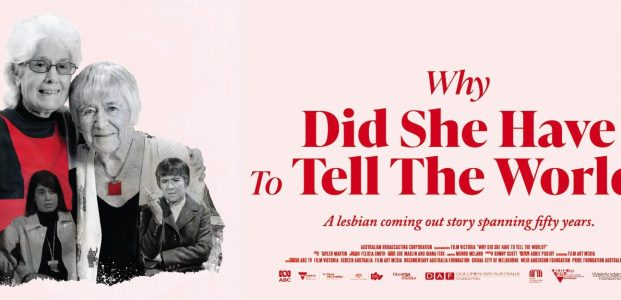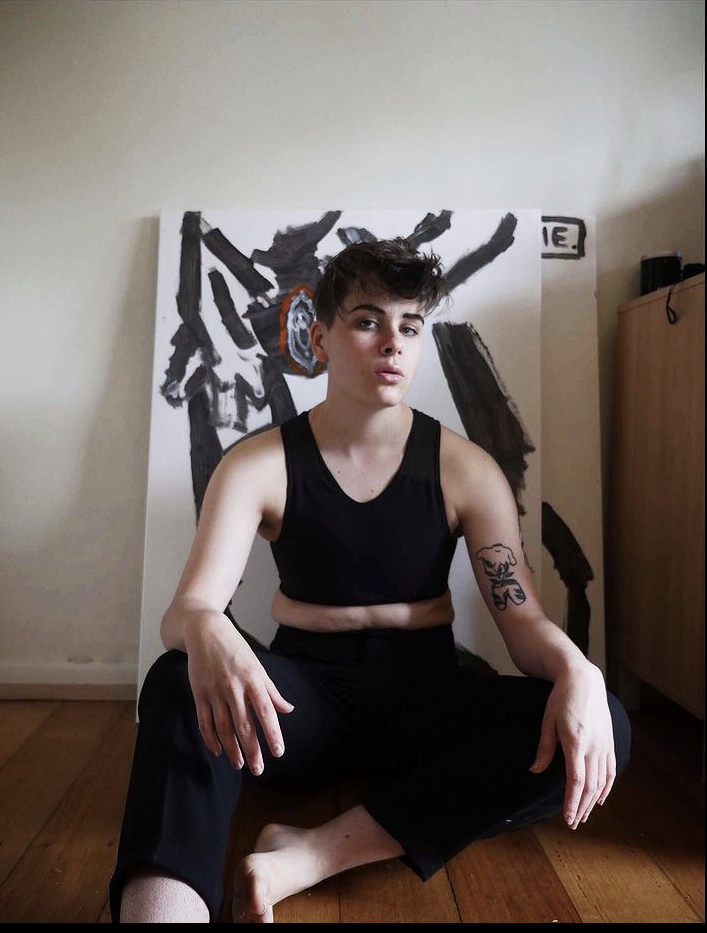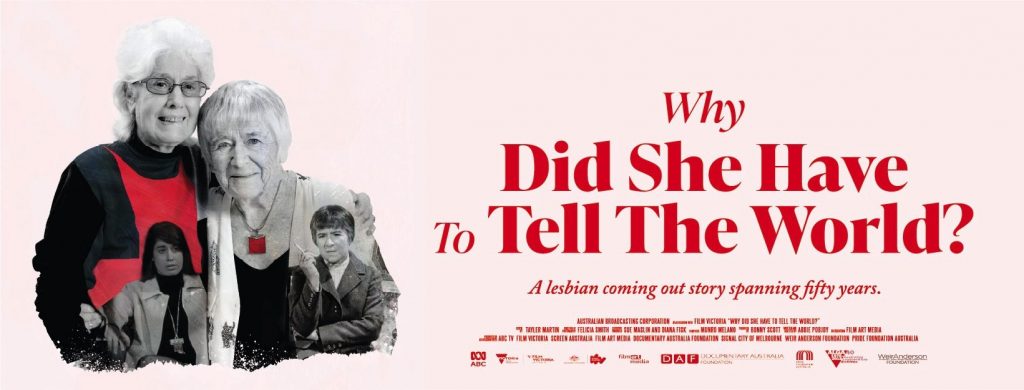AP Pobjoy is a trans, masculine non-binary writer, director and film-maker from Melbourne. After studying a Bachelor of Film and Television, AP worked in the film industry through screenwriting and directing and is currently interning for Film Victoria. Earlier this year, AP released their first television documentary, Why Did She Have To Tell The World?, which tells the story of Francesca Curtis and Phyllis Papps, researchers, writers, activists and the first lesbian couple to come out on national television. In the 70s, this event sparked massive controversy and Francesca and Phyllis soon became the face of LGBTIQA+ activism in Australia. 50 years on, AP explores just how far the LGBTIQA+ movement has come, and where injustices still lie. This June for Pride Month, Empowered Together chatted to AP about their triumphs in the film industry and LGBTIQA+ activism.
First of all, a massive congratulations on the documentary, what a great achievement! Why did you want to share Francesca and Phyllis’ story?
Thank you so much! There are so many components to Phyllis and Francesca’s story, they have lived such full lives and spend almost over fifty years together. I think the biggest thing I want to share about Phyllis and Francesca’s story is the importance of choosing not to be invisible. Not everyone can come out, due to safety and other reasons, but their bravery to come out on national television instilled enough hope in closeted people that they were never alone. I think the biggest take away is how visibility ultimately leads to acceptance
I think for me, what was most upsetting in Why Did She Have To Tell The World was when Phyliss is telling you about the time she took Francesca to hospital, she was constantly asked to give evidence of their relationship as if it weren’t real, despite it thriving for over 50 years. It goes to show that the world still has to make significant movements towards respect and acceptance of the LGBTIQA+ community. When you were making this documentary, was there anything that shook you?
The steps that we still need to make instead the community didn’t shock me as it’s my lived experience as a queer young person. However, what shook me was the conversion therapy that Phyllis had endured as a young woman, and the mentality of queerness being a mental disorder. Victoria has now banned conversion therapy state wide, but globally this is still a huge issue and affects the lives of our community everyday. Phyllis and Francesca’s resilience is remarkable, and it’s important as young queer people to remember our elders’ struggles.
What does Pride mean to you?
Riot, Respect, Remembrance.
Tell us about some of your queer icons.
Well, Phyllis and Francesca for starters. I have always had a big fascination and love for our queer elders: Lou Sullivan, JudithButler, Marsha P. Johnson. My other queer icons include artist and activist Chella Man and queer writers and performers in Film and TV like Mae Martin. People who are using their identities to create.
What advice would you give to young members of the LGBTIQA+ community?
This is a hard question, I feel like I’m still constantly learning about identity and community. If anything, I think I would say is find your community. Whether it be online or in person, there are people out there who do understand you and will have similar experiences. Being queer and young can sometimes be a lonely experience, but just remember we are everywhere.
What do you hope that audiences take away from your film?
I hope audiences take many things from my film and take their own interpretation, thoughts and feelings. In the making of it, I wanted people to take away the importance of intergenerational friendships the most. I have learnt the most about being myself and being queer from Phyllis and Francesca. These types of stories don’t get made unless the bonds between our generations are strong.
Sense of community is a huge thing in the documentary, finding people to be yourself around and people that understand you. How can allies facilitate this?
Let queer people tell queer stories. Let queer people play queer roles. Our best, most authentic and touching work comes from working within our own community. To allies I would say, listen and educate yourself. Stop and think about whether or not this role or show is something you should be writing or if you can help facilitate queer communities in creating their own art. Let queer spaces be queer, it’s something we continuously work hard for.
There is a theme of passing on the torch to the next generation. We have clearly come a long way, what in your opinion are the crucial next steps to achieving inclusivity and acceptance?
I can’t speak for the whole of the queer community in terms of what we need to move forward but as a queer trans person, from my own experience, next crucial steps is affordable and accessible trans health care, LGBTQI+ sex education in schools and more representation and protection for our first nations trans community.
If you would like to watch Why Did She Have To Tell The World? and support LGBTIQA+ film makers, you can rent or buy it on Vimeo by following this link.



